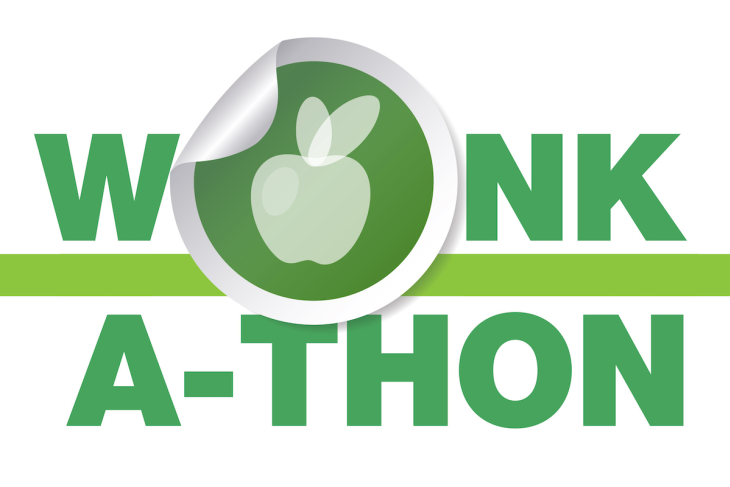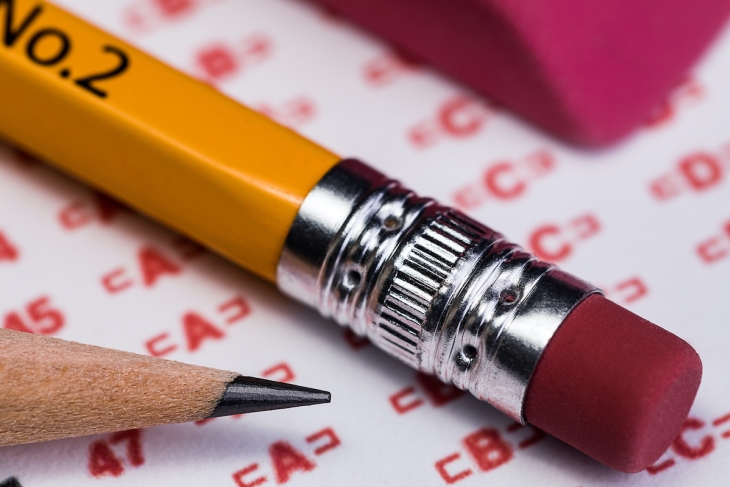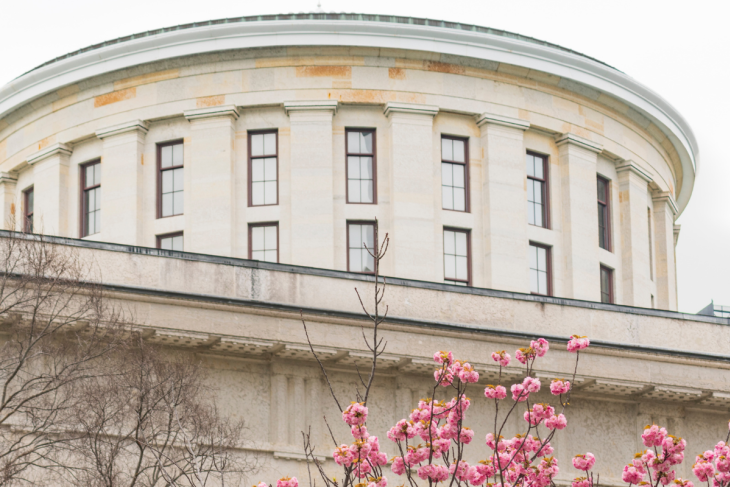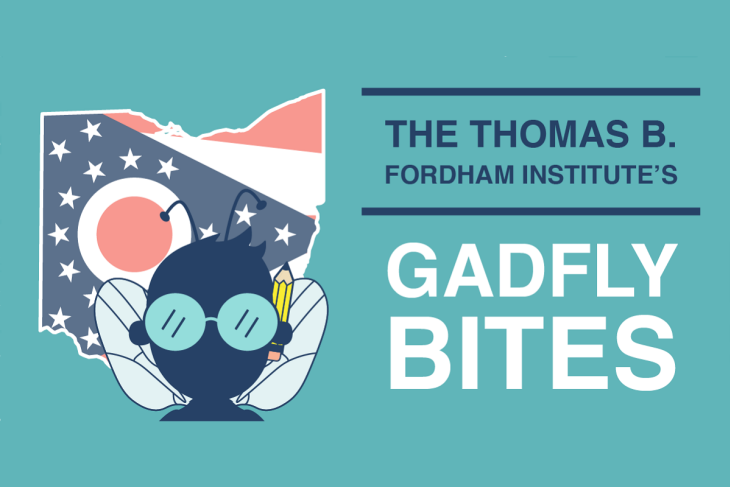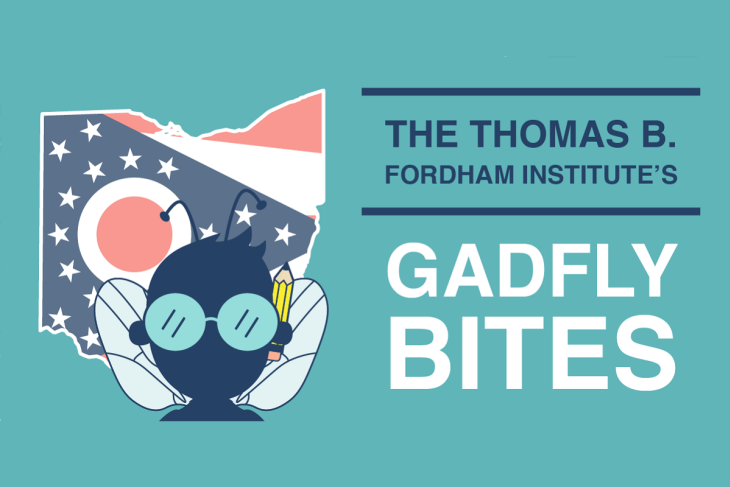Editor’s note: This essay is an entry in Fordham’s 2021 Wonkathon, which asked contributors to address a fundamental and challenging question: “How can schools best address students’ mental health needs coming out of the Covid-19 pandemic without shortchanging academic instruction?” Click here to learn more.
This fall, most students will be returning to full-time, in-person instruction after one of the most disrupted years of their lives. All students will be coming back with varying degrees of adverse experiences. Some may have lost loved ones, had a parent lose their job, seen a parent go through illness, or even been sick themselves. And all students will have experienced a disruption to what their “norm” was prior to Covid-19.
Though the data are still being gathered on the exact mental health toll the pandemic has taken on children and adolescents, both the initial numbers and anecdotal experience suggest a significant impact. A recent CDC report found that pediatric emergency department visits for mental health from March 2020 to October 2020 increased over their 2019 comparisons by 24 percent for children ages five to eleven and 31 percent for adolescents ages twelve to seventeen. This comes at the same time that overall emergency visits for this same population during the same time period were down by 43 percent.
Schools, school leaders, and teachers are going to return to an environment they have never seen before. A significant emphasis has been placed on trying to figure out how to mitigate learning loss, but schools must remember that they can’t begin to mitigate that loss until they help students stabilize their mental health.
Mental health options for schools to consider
A strong mental health program should offer a diverse array of services and be tied into every aspect of the school day. As schools prepare for students to return, they should consider mental health services outside the traditional one-on-one counseling most of us think of when discussing mental health. A few specific considerations are listed below.
Safety planning for suicide prevention. Evidence on youth suicide rates during the pandemic is still mostly anecdotal, but suicide was the second-leading cause of death among adolescents before the virus hit. Schools can address this need by ensuring that they have a strong process in place for identifying and evaluating students for suicide or self-harm risk and for working with them and their families to create and implement a safety plan when a risk is found.
To correctly identify students who are at-risk for suicide, schools must do comprehensive training for all staff members—not just teachers—on how to look for risk signs and what to do if they find them. This training should take place during summer professional development, but it should also be an ongoing topic throughout the year.
Once a staff member has identified a student who they believe may be at risk, they must know exactly what to do and where to take them for an evaluation. Schools should have a set process to evaluate student risk and a clear plan of what to do if the student is an immediate risk to themself or others, such as going to the hospital immediately, or is not a current active risk but may be at some point, like creating a safety plan.
A good safety plan should help students and the people around them identify potential triggers for self-harming behavior and have places to go, people to speak to, and emergency numbers to call if a student feels unsafe. Every school should have a template for a safety plan. Even if schools don’t have mental health professionals on staff, they should still have a concrete safety planning process in place, and all staff should be able to confidently discuss it with a student.
In preparation for a return in the fall, all schools should take time this summer to review their plans and update them to reflect the change coming—for example, how to provide support to students who may need to remain virtual because of health concerns.
Group therapy. Well-done groups are one of the most effective therapeutic techniques for schools. They not only help students address common mental health concerns, but also facilitate interpersonal social-emotional growth. From an organizational perspective, groups allow one mental health professional to serve multiple students in a shorter amount of time. As schools get ready to transition back to more traditional classroom learning, they should consider where and how to integrate groups into the school day.
After having experienced similar levels of life disruption caused by virtual or hybrid learning, many students will return with shared mental health concerns. Potential Covid-related group topics include grief for students who have lost family and friends to the pandemic, germaphobia and compulsive tendencies for students who have internalized hand washing and mask wearing to the extreme, and sensory issues for students who are struggling to return to large and busy classrooms after potentially more than a year of learning individually in their rooms.
One way schools can consider adding groups into the school day is by integrating them as a class during traditional elective time. This can be an opt-in choice for families who already know their students need this support or a recommendation from the school after an initial evaluation. Another option for schools with flexibility in the schedule before or after school would be to add optional groups on site during those times for families who opt in. They should also be mindful of the quality of the provider. This is important to all mental health services, but is particularly essential in groups. While a well-run group is extremely effective, a poorly run one can be ineffective or harmful.
Schools with highly qualified mental health staff can wrap this into their normal work. But those without these faculty in place should consider using federal pandemic aid dollars to hire strong mental health professionals to run these groups. As they can serve multiple students at one time, this can be both a strong therapeutic option, and a cost-effective one.
Coping skills for overstimulated students. When students return in the fall, some will not have been in a regular classroom for more than a year. Their daily routine went from one that was surrounded by people, activity, and sensory overload to one that was predominantly just their families. Going back will be over-stimulating for many.
Schools should consider having mental health professionals in place to support these students, as well as having the tangible tools to help them cope on campus. Some examples are headphones, music options, and systems in place that allow students to take a break from excessively stimulating environments, such as quiet rooms.
For students who display more severe symptoms, individual plans should be created to help them ease back into the school environment. These services are best provided by a qualified mental health professional, for which schools can use stimulus funds.
Universal screening tool. We can’t know students’ current ability or what they need without assessing them. Mental health is no different. All schools should have a universal screening tool in place that can evaluate all students before or immediately after the beginning of the year for whether they require these services.
Keep in mind, however, that these screening tools can do more harm than good if schools do not follow up with services. If a screening shows that a student needs support for depression or anxiety, for example, but the school does not then provide that service, the student learns that being vulnerable and asking for mental health support does not mean that that support will come.
Many states have a universal screener recommended by their department of education, but if your state does not, some examples include The Strengths and Difficulties Questionnaire or The BASC-3. Each school should customize the screener to their particular needs and have a plan and the resources in place to address any needs that are discovered. Federal aid dollars can be used both for the development of this tool and for the mental health professionals required to provide the services needed.
Students of Concern team. Although a universal screening tool is helpful in identifying issues upfront, ongoing observation and assessment are needed to both ensure strong treatment is occurring and to identify students whose needs did not appear on the initial screening. A weekly Students of Concern (SOC) team meeting can be an effective way to address these concerns. These are holistic groups made up of experts in students’ academic, physical health, mental health, behavioral, special education, and any other unique school needs. They should meet weekly, with a plan for which students to discuss and evaluate. Each team member should leave these meetings with concrete follow-up assignments designed to meet each student’s unique needs. And any staff member, student, or parent should be able to refer a student to the team for consideration.
This approach can help ensure that the students with the highest needs are consistently being supported and that their support plan evolves as their needs do. Schools can consider using federal stimulus funds for support staff members to ensure teams’ goals are met.
Mental health support for staff. Just as students have experienced a drastic change in the school environment, so too have school staff members. One of the greatest determinants of a student’s classroom success is the strength of the teacher. As such, schools should consider what supports they can put in for educators. Weekly or biweekly mental health check-ins for staff can provide a huge benefit. For schools that already have mental health professionally, if these individuals have set strong boundaries with their colleagues, they can be used to support the staff. For schools without this resource, consider using federal relief dollars to hire contract mental health professionals for this purpose.
—
As with all mental health, it is important to remember that the quality of the provider is critical to the well-being of students. When hiring, schools should be sure to find licensed professionals and check with state accreditation boards to ensure candidates are in good standing. Possible provider types include licensed psychologists, licensed clinical social workers (LCSW), licensed master social workers (LMSW), and licensed professional counselors (LPC). Keep in mind, too, that school mental health is its own subset of mental health, and not all individuals are prepared for what it requires.
Schools should also be clear about the expectations for student services and any limitations they would put in place—for example, that students not be pulled from core classes. For schools considering partnering with outside providers, particularly companies as opposed to individuals, clarify who will be providing services to students. Many behavioral health companies have a licensed professional to do the initial assessments, but then use unlicensed individuals to implement the actual therapeutic plans. There are certainly times where this could be effective, but mental health can be complex, and the vast majority of services should be provided by licensed professionals.
Why these programs are so important, and how to fund them
Schools have long needed comprehensive mental health supports for students and staff. According to the US Department of Health and Human Services, one in five children and adolescents experience a mental health problem during their school years.
At the most basic level, the best teacher in the world cannot effectively reach a student who is having a mental health crisis. For a long time, we have expected teachers to handle the mental health issues of students in their class in addition to teaching. We need to recognize that mental health is no different than physical health in that they are both real needs that require specially trained professionals to address—and that when left untreated, they can significantly inhibit the ability of a student to learn. Classroom teachers can provide some basic mental health support like comforting a student who is upset. However, asking teachers to run a classroom with students who have untreated mental health issues or asking them to figure out how to treat them is different. The fact that mental health issues are often more difficult to see, combined with years of mental health stigmatism, has led to these issues being largely ignored in education. However, recent efforts to advance the cause of mental health access for students have caused many schools to rethink their approach.
While some schools have found ways to add the required resources through complicated funding and staffing structures, others have struggled to get even one mental health professional on campus. With the sudden influx of federal Covid-19 relief funds, the financial barriers to providing these services in schools are disappearing, at least temporarily. As schools head into summer planning, they should be considering how and where to add these services—and even more importantly, how to ensure the long-term sustainability of funding that will let them remain in place after the federal relief dollars expire.
Funding for the long-term
The simplest and most effective way to provide comprehensive mental health services on campus is for schools to hire mental health professionals on staff. Many schools employ counselors—but they are often tasked with duties such as scheduling and college admissions. The best practice for schools is to have mental health professionals that are completely and singularly focused on providing mental health services to students. These individuals should be specially licensed. Some examples include licensed social workers (master’s or clinical), licensed professional counselor, or licensed psychologists. The current recommended ratio is one mental health professional for every 250 students. But with the increased needs in the wake of COVID-19, that may not be enough. While some schools already employ mental health professionals, others have not been able to make that possible due to budgetary constraints. Now, at least in the short term, thanks to three separate rounds of federal Covid relief funds, schools have an opportunity to hire these professionals.
While the best solution would be to simply add these individuals to staff, some schools and districts may run into concerns about the number of allowable full-time employees (FTEs) or concerns over what to do when the funding ends. For these schools, a good solution would be to contract with individual mental health professionals. Contractors allow schools the benefit of mental health support while not requiring the same resources as FTEs. In addition, many states may experience a talent pipeline issue because of a shortage of school-specialized mental health professionals combined with the increased demand for their services. Using contactors allows one individual to service multiple schools, slightly mitigating the talent pipeline concern. Contractors can also be useful if the school wants to provide a specialized type of mental health support, such as addiction, LGBT-related issues, family therapy, or a specialization in complex trauma. For these specializations, there may not be a large enough student population in need to justify employing a full-time specialist, but it may make sense for a school to contract for a limited number of hours.
While the federal Covid-19 relief funds can provide immediate resources to add these services, many schools may rightly be concerned about how to maintain this level of mental health access in the long term. The good news is that Obama-era changes to federal Medicaid guidelines opened up a potential pathway for long-term funding of these services. In 2014, Medicaid released updated guidelines known as the Free Care Reversal Policy that clarified that states can allow schools to bill Medicaid for mental health services for all students—not just those with IEPs, which is how Medicaid had previously functioned. This pathway has the potential to provide long-term sustainable funding for schools to provide these mental health services.
However, each state must go through a process to authorize this change, and to date, only thirteen have. If your school is in California, Colorado, Connecticut, Florida, Kentucky, Louisiana, Massachusetts, Michigan, Missouri, Nevada, New Hampshire, North Carolina, or South Carolina, your state has taken steps to adopt this policy; Georgia and Oregon have begun the process and are waiting on approval. If you are in one of these states and have a Medicaid-eligible population, this funding method is open to you. Each of these states has its own unique rules and requirements, so if you have not as yet begun billing Medicaid this way, you should reach out to your state department of education for support. If you are in one of these states and are not yet set-up for this, your federal Covid-19 relief dollars could be used to help you do this long-term by purchasing billing software or hiring staff that can be paid for by these federal funds until the Medicaid reimbursement can be received.
In states that have not made this policy shift, schools should consider lobbying their departments of education (in conjunction with the entity that oversees Medicaid in their state) to work to implement the Free Care Reversal Policy and use federal Covid-19 relief dollars to support that work. Helpful resources for this can be found at the Healthy Students, Promising Futures Learning Collaborative. Fully implementing this policy will allow schools to continue providing these services long after the federal Covid-19 funds run out.
Access to mental health services is critical to student success in school. With students returning after a year of disruption, these services are going to be more important than ever. Fortunately, the federal Covid-19 relief dollars can provide the funding for those resources in the short term. And if used correctly, they also have the potential to provide sustainable funding through the Medicaid Free Care Reversal Policy. If this moment is leveraged well, it can be a profound turning point for mental health access in schools.
